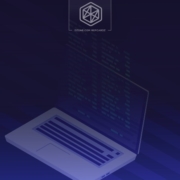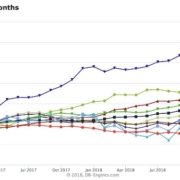Low-code is a bit of a misleading classifier. Rather than not coding at all, low-code platforms allow developers to take shortcuts to begin tackling major problems such as legacy modernization projects. Learn how low-code tools can supplement your software development and what capabilities you should look for.
Source de l’article sur DZONE
Articles
"Apps without search is like Google homepage without the search bar."

It’s hard to design an app without a good search. These days, it’s also hard to find a database without a built-in search. MySQL to NoSQL, Sybase to Couchbase, every database has text search support — built-in like Couchbase or via integration to Elastic — as is the case in Cassandra. Unlike SQL, text search functionality isn’t standardized. Every application needs best of the breed search, but not every database provides the same text search functionality. It’s important to understand the available feature, performance of each text search implementation and choose what fits your application need. After motivating text search, you’ll learn about the text search features you’d need for an effective, compare and contrast those features in MongoDB and Couchbase with examples.
Database DevOps has come of age. Now seen as a key technical practice which can contribute to the successful implementation of DevOps, it stops the database being a bottleneck and makes releases faster and easier.
Conversely, perhaps, the automation and audit trails it introduces can help to protect personal data within databases and make compliance part of the same process rather than an additional time-consuming step outside it.
Consider the graph below. I already talked about this graph when I wrote about permission-based graph queries.
 In this post, I want to show off another way to deal with the same problem, but without using graph queries and using only the capabilities that we have in RavenDB 4.1.
In this post, I want to show off another way to deal with the same problem, but without using graph queries and using only the capabilities that we have in RavenDB 4.1.
Public and private clouds empower modern businesses to move away from traditional error-prone architectures and run applications with five nines and six nines availability. Business applications can be spun-up on-demand, instantly, and cost-effectively. Database applications have always been a key component of all enterprise infrastructures, but these applications and relational databases still have a long way to go when it comes to leveraging the power of the cloud. Due to being designed as large monolithic applications they present a significant challenge when you are trying to run them reliably in a scalable manner.
We have created a demo that exhibits how Hedvig enables the reliable deployment of private and hybrid cloud databases. In this demo, we cover two scenarios for running databases, Highly available databases and Test/Dev databases. You can find a link to the actual demo at the end of this article. Feel free to skip reading about the details, and jump ahead to the demo.
Most companies only use 5 to 10 percent of the data they collect. So estimates Beatriz Sanz Sai, a 20-year veteran in advanced analytics and the head of Ernst and Young’s global data and analytics practice. While it’s impossible to validate such a claim, the fact is many organizations are gathering lots of data but analyzing little of it.
Legacy database management systems shoulder much of the blame for this. They hog time and resources for the sake of storing, managing, and preparing data and thus impede analytics.
Today’s most pressing data challenges center around connections, not just tabulating discrete data. Graph analytics accelerate breakthroughs across industries with more intelligent solutions.
This article series is designed to help you better leverage graph analytics so you can effectively innovate and develop intelligent solutions faster.
As an application architect, eventually, you’d choose the database or database service to power your newest application or a microservice. Selecting one of the databases among relational databases was easier. The use cases were roughly divided into OLTP and OLAP (decision support). The workload differences between OLTP and OLAP were well known. OLTP workloads consist of short transactions on few random rows, expecting millisecond responses on pre-compiled queries; OLAP workloads consist of data loads, long-running queries scanning millions of rows of a fact table of a star/snowflake schema. Each had the performance benchmark and TCO well defined, measured and audited via TPC benchmarks. You can make use of these numbers, approximate your workload, understand the needs and capabilities match on other fronts like administration.
Then, there are NoSQL databases. NoSQL databases were invented to handle the webscale performance of operational applications. It had to be elastic to handle the scale and tolerate nodes going down (aka partition tolerance). That sparked the innovation to create databases on a variety of data models and use cases. There are databases for JSON, graphs, time-series and more. From Azure databases to ZODB, from Couchbase to Cassandra. MongoDB to TiDB, spatial to JSON databases — so many different kinds of databases. In fact, NoSQL-databases.org lists 225 databases as of November 2018.
This is a primer on time-series data, and why you may not want to use a “normal” database to store it.
Here’s a riddle: what do self-driving Teslas, autonomous Wall Street trading algorithms, smart homes, transportation networks that fulfill lightning-fast same-day deliveries, and an open-data-publishing NYPD have in common?
Kyvos Version 5 was released with new enhancements to scale growing workloads.
The update, which was designed specifically for the cloud, allows businesses to scale growing workloads and draw intelligence, which in turn enables businesses to run real-time queries on data before it enters the cube.










